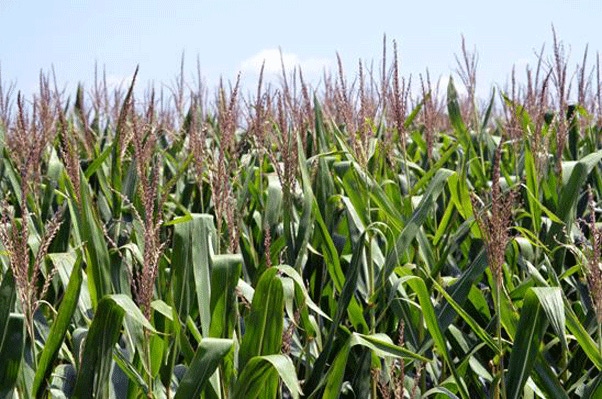September 30, 2014

In the heart of Kentucky’s grain belt, adequate soil moisture has become a big issue for area producers who have dealt with droughts two of the past three growing seasons. Agronomists with the University of Kentucky College of Agriculture, Food and Environment are working with area producers to find practical solutions.
Carrie Knott, UK agronomist, is working with Muhlenberg County farmer Danny Miller and Darrell Simpson, UK Cooperative Extension Service agriculture and natural resources agent for Muhlenberg County, on a project that tests the feasibility of controlled drainage structures.
Drainage tiles are common throughout Western Kentucky, as wet winters and poorly draining soils keep the ground saturated well into the spring. The tiles help remove water from the fields so producers can plant corn at optimum times for better yields with fewer soil compaction issues.
“Controlled drainage structures could be a way for us to conserve our existing water and utilize it more efficiently to get better yields with lower production costs,” Knott said. “It’s like putting a stopper into the drainage tile. The water percolates up and stays in the soil profile so it would be available to the plants during drought conditions.”
For the project, they are using two small fields of about six and 10 acres. Both fields have drainage tiles and a Belknap silt loam soil. One of the fields has a controlled drainage structure, and the other is free flowing.
“Belknap soils have decent water-holding capacity, but at the same time, you want to capitalize on every drop of water that you have when it is dry,” Simpson said.
Miller installed the drainage tiles in these fields during the winter of 2006 as it became increasingly difficult for him to get corn planted in a timely manner. Since then, his yields have improved. He hopes the controlled drainage structures continue to increase them.
While the initial project is on relatively small fields, Simpson is hopeful that producers can install the structures to manage larger fields, to help offset some of the costs. A drainage control structure ranges from $600 to $850 depending upon the structure depth and type.
While the Muhlenberg County fields have yet to be harvested, similar research conducted in states to the north shows this may be promising.
“In Minnesota and Illinois, they’ve been doing this for a long time,” Knott said. “In corn, they usually see a 10 to 15 percent increase in yields. That could be as much as 20 bushels more per acre in high-yielding fields.”
Corn is growing in both fields now, but Miller will rotate to soybeans next year. UK researchers will test the structure’s effect on soybean yields at that time.
Want the latest in ag news delivered daily to your inbox? Subscribe to Southeast Farm Press Daily. It’s free!
About the Author(s)
You May Also Like




